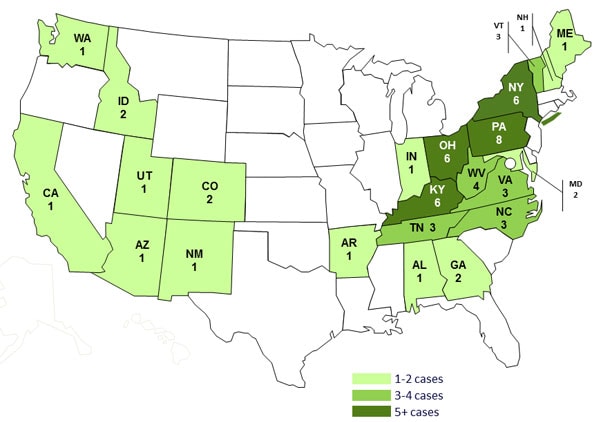The purpose of this post is not to scare you away from raising your own chickens or away from buying eggs from someone who does, but simply to make you aware of the food safety issues related to food production in general. Commercial agriculture practices do a great job of following strict food safety guidelines, but as more and more people are interested in raising their own food, there is a bit of a disconnect with the food safety concerns of raising your own.
The following is a post from the Center for Disease Control (CDC) regarding recent Salmonella cases in humans being linked to backyard poultry. The full announcement and more information can be found at: http://www.cdc.gov/salmonella/live-poultry-05-14/

- As of May 7, 2014, a total of 60 persons infected with the outbreak strains of Salmonella Infantis orSalmonella Newport have been reported from 23 states.
- 31% of ill persons have been hospitalized, and no deaths have been reported.
- Epidemiologic and traceback findings have linked this outbreak of human Salmonella Infantis andSalmonella Newport infections to contact with chicks, ducklings, and other live baby poultry from Mt. Healthy Hatcheries in Ohio.This is the same mail-order hatchery that has been associated with multiple outbreaks of Salmonellainfections linked to live poultry in past years, including in 2012 and 2013.
- 82% of ill people reported contact with live poultry in the week before their illness began.
- Findings of multiple traceback investigations of live baby poultry from homes of ill persons have identified Mt. Healthy Hatcheries in Ohio as the source of chicks and ducklings.
- Mail-order hatcheries, agricultural feed stores, and others that sell or display chicks, ducklings, and other live poultry should provide health-related information to owners and potential purchasers of these birds prior to the point of purchase. This should include information about the risk of acquiring a Salmonella infection from contact with live poultry.
- Read the advice to mail-order hatcheries and feed stores and others that sell or display live poultry.
- Always wash your hands thoroughly with soap and water right after touching live poultry or anything in the area where they live and roam.
- Do not let live poultry inside the house.
- Additional recommendations are available.
- These recommendations are important and apply to all live poultry, regardless of the age of the birds or where they were purchased.
This excerpt and the map, were taken from the Center for Disease Control website, posted May 8, 2014.
